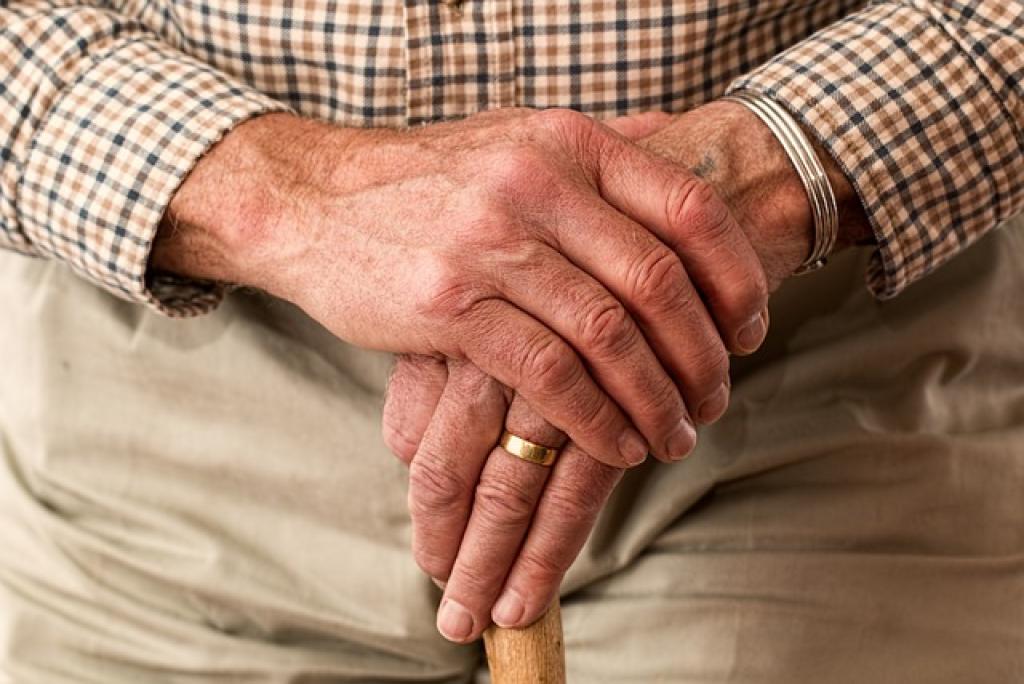Aging is a journey filled with opportunities for growth, exploration, and embracing new challenges. One of the most empowering tools for navigating this journey is exercise. Despite common misconceptions, staying active is not just for the young—it’s a vital aspect of living well at any age.
Exercise for seniors offers a treasure trove of benefits, from bolstering physical health to enhancing mental clarity. Regular physical activity can help maintain independence, improve balance, and reduce the risk of chronic diseases. It’s not just about living longer, but living better.
Beyond the physical perks, exercise fosters social connections and boosts mood, helping combat the isolation that can come with aging. Whether it’s a brisk walk through the park or a gentle yoga class, the world of exercise is rich with possibilities tailored for every ability and interest.
Dive into this guide to discover how incorporating exercise into daily life can unfold a vibrant, healthier tomorrow.
Why Exercise is Crucial for Senior Health
As we age, our bodies undergo various changes, making it crucial to incorporate regular physical activities into our routines. Exercise acts as a powerful ally in maintaining our health and vitality, offering numerous benefits tailored to the needs of seniors.
Enhancing Physical Function
Exercise helps preserve muscle mass and improves flexibility, which is essential for performing daily tasks with ease. It strengthens bones, reducing the risk of fractures and osteoporosis, and enhances cardiovascular health, promoting a healthier heart.
Regular activity also improves balance and coordination, significantly decreasing the likelihood of falls, a common concern among seniors. By keeping the body agile, exercise ensures a cushioned and secure aging process.
Boosting Mental Well-being
Apart from physical advantages, exercise plays a pivotal role in enhancing cognitive functions. It boosts memory, concentration, and overall mental sharpness, staving off age-related cognitive decline.
It’s also worth noting, physical activity releases endorphins, the feel-good hormones, which help alleviate stress and anxiety. It’s a fun and effective way to keep spirits high and maintain a positive outlook on life.
Incorporating even simple exercises into daily life can yield substantial health improvements, enriching the golden years with energy and enthusiasm.
Exploring the Physical Benefits of Exercise for Seniors
For seniors, staying active is a cornerstone of sustaining physical health and independence. Engaging in regular exercise presents a wonderful opportunity to embrace a more vibrant lifestyle.
One significant benefit is the enhancement of cardiovascular health. By engaging in activities such as walking or swimming, seniors can improve heart function and circulation, which lowers blood pressure and reduces the risk of heart disease.
Exercise also plays a key role in maintaining a healthy body weight and metabolism. It helps manage weight by burning calories and building muscle, which can prevent obesity—a common issue as metabolism tends to slow with age.
Flexibility and strength improvements are remarkable benefits of regular exercise. Stretching exercises and light resistance training keep muscles supple and strong, easing joint stiffness and pain. This not only aids in performing everyday activities with greater ease but also enhances overall mobility.
Coupled with this, engaging in weight-bearing exercises helps increase bone density, a critical factor in preventing osteoporosis. Stronger bones mean a lower risk of fractures and a sturdier framework to support an active lifestyle.
Embracing physical activity is a robust strategy to counteract the physical challenges of aging, ensuring seniors can enjoy life to its fullest potential.
Mental Well-being: How Exercise Impacts Senior’s Minds
Exercise is not just a boon for the body; it’s equally transformative for the mind, offering profound benefits for seniors as they navigate the challenges of aging.
Regular physical activity has been shown to significantly boost brain health. Engaging in exercises like aerobics, tai chi, or even a simple walk in nature can enhance cognitive function and memory. These activities stimulate the production of new brain cells and improve the connectivity between existing ones, promoting sharper thinking and memory retention.
Mood Enhancement and Emotional Resilience
Endorphins, often known as the body’s natural mood elevators, are released during exercise, creating feelings of happiness and relaxation. This natural high can be a powerful tool in combatting depression and anxiety, fostering a greater sense of emotional well-being.
Exercise also offers seniors a breather from the routine hustle, providing moments of peace and mindfulness. This mental respite helps reduce stress levels and can contribute to a more optimistic and resilient outlook on life.
Social engagement is another key aspect where exercise shines. Group activities, whether it’s joining a fitness class or participating in a walking club, encourage social interaction, decreasing feelings of loneliness and isolation.
The mind’s journey alongside physical activity is truly inspiring, unlocking potential for joy and intellectual growth well into the later years.

Designing a Safe and Effective Exercise Routine for Older Adults
Creating a tailored exercise plan is essential for seniors to reap the full benefits of physical activity while ensuring safety. An effective routine should balance various types of exercises to support overall wellness.
Begin with a visit to the healthcare provider to understand any physical limitations or medical conditions that need consideration. With the right guidance, seniors can embark on a safe fitness journey, addressing their unique health needs.
Types of Exercises to Include
Cardiovascular activities, like walking or cycling, enhance heart health and endurance. Aim for at least 150 minutes of moderate aerobic exercise weekly, as recommended by health experts.
Strength training with light weights or resistance bands is crucial for maintaining muscle mass and bone density. Focus on major muscle groups twice a week to enhance strength and stability.
Incorporate balance and flexibility exercises, such as yoga or tai chi, to improve coordination and prevent falls. These exercises help maintain mobility and reduce the risk of injury.
Staying Hydrated and Listening to the Body
Hydration is key during any physical activity to prevent fatigue and cramps, so drink plenty of water throughout. Encouraging seniors to listen to their bodies and rest if feeling unwell ensures the routine remains enjoyable and sustainable.
By crafting a balanced regimen, seniors can confidently enjoy an active lifestyle, boosting both their physical and mental health.
Maximizing Independence and Quality of Life Through Physical Activity
Physical activity stands as a powerful pillar in helping seniors maintain their independence and elevate their quality of life. By fostering strength and flexibility, exercise ensures that everyday tasks remain manageable and enjoyable.
Regular movement enhances physical capabilities, enabling seniors to perform daily routines with greater ease. From climbing stairs to carrying groceries, the confidence and strength gained through exercise translate into autonomy, reducing reliance on others.
Social Engagement and Community Connection
An active lifestyle naturally encourages social interaction. Whether it’s attending group fitness classes or participating in community walking clubs, these activities offer meaningful opportunities to connect with others, forging friendships and creating a support network.
Social connections play a critical role in promoting emotional well-being, combating feelings of loneliness, and enriching life with laughter and shared experiences.
Engaging in physical activity also contributes to a proactive approach in managing chronic conditions, reducing symptoms, and improving overall health. This proactive stance empowers seniors to take control of their health outcomes, minimizing hospital visits and maximizing time spent on meaningful pursuits.
Ultimately, exercise is more than just movement; it’s a gateway to a fulfilling, independent lifestyle, adding vibrancy to each day with newfound energy and resilience.
The Bottom Line: Embracing the Positive Impact of Exercise in Senior Years
Reaching the golden years does not mean slowing down; in fact, it’s a time to harness the benefits of exercise more than ever before. Physical activity offers an array of advantages, empowering seniors to live life with vitality and ease.
By integrating regular exercise into daily routines, seniors can profoundly enhance both their physical and mental health. From strengthening muscles to boosting mood, the benefits are as diverse as they are impactful. Exercising fosters a sense of independence, allowing everyday tasks to be performed without struggle, which greatly improves quality of life.
Furthermore, the social connections and friendships born from group activities and exercise classes provide a support system that enriches emotional well-being. Staying physically active is a joyful way to keep loneliness at bay while sharing moments of laughter and encouragement.
Making exercise a priority also helps mitigate the impacts of chronic diseases, leading to a healthier and more balanced lifestyle. This proactive approach allows seniors to focus on what truly matters—spending time with loved ones and indulging in personal passions.
In embracing exercise, seniors aren’t just adding years to life; they’re adding life to years. As we celebrate the power of movement, let’s recognize it as a catalyst for continued growth, adventure, and happiness during the senior years. Ultimately, exercise serves as a beacon of hope and health, illuminating the path to a more fulfilling and independent life.

No responses yet